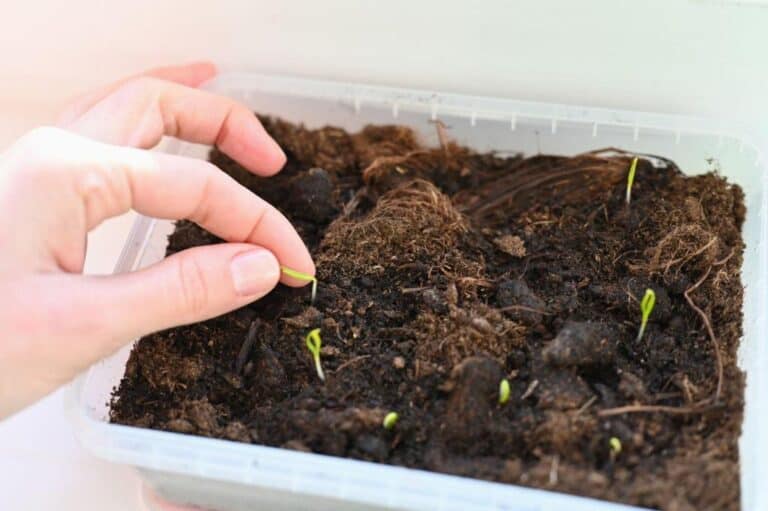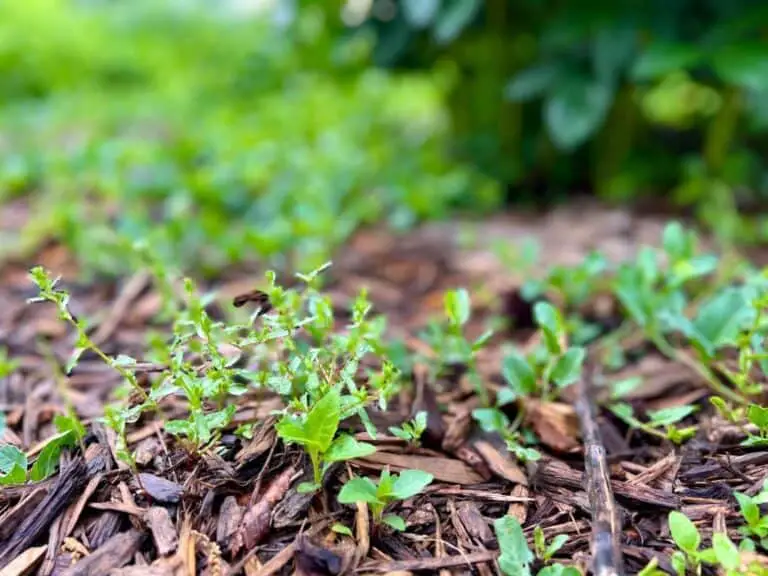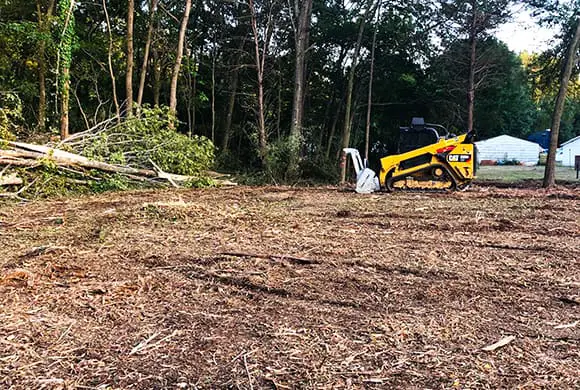How Does the Erosion of Topsoil Cause Flooding? Topsoil-Flood Link

In the intricate web of our natural world, every component plays a crucial role. One often overlooked but immensely significant element is topsoil. Under our feet, it quietly nourishes the plants that feed us and provides a foundation for ecosystems to thrive.
The erosion of topsoil, seemingly distant from the realm of torrential downpours and surging rivers, has a profound influence on the dynamics of flooding. It’s a tale of how nature’s subtle intricacies can yield monumental consequences.
In the pages that follow, we’ll embark on a journey to unearth the secrets behind this enigmatic relationship, unraveling the mechanisms, repercussions, and potential solutions to the topsoil-flood enigma. Welcome to a world where the quiet erosion beneath our feet holds the key to understanding the thunderous forces of nature above.
Understanding Topsoil
Before we discuss manure’s role in gardening, let’s get to know topsoil better. Topsoil is the uppermost layer of soil, usually ranging from 2 to 8 inches deep, and it plays a vital role in plant growth. It’s the layer that contains the highest concentration of organic matter, minerals, and nutrients that plants need to thrive.
Topsoil is a dynamic mixture of various components, including:
- Organic Matter: This component consists of decomposed plant and animal material, which enriches the soil with essential nutrients.
- Minerals: Topsoil contains a blend of minerals like sand, silt, and clay. The proportions of these minerals determine the soil’s texture.
- Microorganisms: Beneficial bacteria and fungi in topsoil help break down organic matter and make nutrients accessible to plants.
- Nutrients: Vital nutrients such as nitrogen, phosphorus, and potassium are present in topsoil, which are essential for plant growth.
So, does topsoil contain manure? Typically, topsoil doesn’t contain manure as part of its natural composition. However, some commercial topsoil blends may include composted manure or other organic materials to enhance their nutrient content. It’s essential to check the label or inquire about the contents when purchasing topsoil.
Factors Contributing to Topsoil Erosion

Erosion is a natural process, but human activities have accelerated it to alarming levels. When topsoil erodes, it means that this precious layer of topsoil is being washed or blown away faster than it can be replenished. Several factors contribute to topsoil erosion, including:
- Rainfall and Runoff: Excessive rainfall can move topsoil particles, which runoff then carries into rivers and streams.
- Wind Erosion: In arid regions, strong winds can carry away loose topsoil, leaving the land vulnerable to further erosion.
- Deforestation: The removal of trees and vegetation weakens the soil’s structure, making it more susceptible to erosion.
- Unsustainable Farming Practices: Tilling, monoculture farming, and overgrazing can all contribute to topsoil erosion.
- Urbanization: Construction and urban development often involve removing the topsoil, disrupting natural drainage patterns.
See also: Terrace Farming Reduce Soil Erosion
How Does the Erosion of Topsoil Cause Flooding?
Now, let’s unravel the link between topsoil erosion and flooding. At first glance, these two phenomena might seem unrelated, but they are intrinsically connected through the intricate balance of our environment. Here’s how it works:
1. Reduced Infiltration
Healthy topsoil acts like a sponge, absorbing water and allowing it to slowly percolate into the ground. This process, known as infiltration, helps recharge groundwater and maintain steady streamflow. However, when topsoil erodes, the soil’s ability to absorb water diminishes significantly.
As a result, rainwater runs off the surface more rapidly, increasing the volume and velocity of water entering streams and rivers. This surge in water can overwhelm natural drainage systems and lead to flash floods.
2. Sedimentation
Eroding topsoil doesn’t disappear; it ends up somewhere else. In many cases, runoff transports it into water bodies. The sedimentation of rivers and streams due to excessive topsoil erosion can have several adverse effects:
- Reduced Water Capacity: Sediment fills up riverbeds and reduces their capacity to hold water, increasing the risk of overflowing.
- Blockage of Drainage Systems: Sediment buildup can clog stormwater drainage systems, exacerbating flood risks in urban areas.
- Habitat Destruction: Sediment can smother aquatic habitats and harm aquatic life, disrupting ecosystems.
3. Altered Hydrological Cycle
Erosion disrupts the delicate balance of the hydrological cycle, where water evaporates, condenses into clouds, and falls as precipitation. Excessive topsoil erosion can disrupt this cycle, leading to altered weather patterns, including more intense rainfall events. This, in turn, can contribute to an increased frequency and severity of floods.
The Human Toll
Topsoil erosion, which makes flooding worse, can have devastating effects on both communities and ecosystems. Human settlements near rivers and coastal areas are particularly vulnerable. Floods can:
- Displace Communities: Floodwaters force people to evacuate their homes, causing temporary or permanent displacement.
- Economic Losses: Floods damage infrastructure, crops, and property, resulting in substantial economic losses.
- Environmental Impact: Ecosystems suffer as floodwaters disrupt habitats, harm wildlife, and introduce pollutants.
Does Topsoil Erosion Affect the Quality of Soil?
Topsoil erosion exerts a significant influence on soil quality, triggering a chain reaction that reverberates throughout the ecosystem. The erosion of topsoil signifies the gradual disappearance of the soil’s most fertile and nutrient-rich layer. This, in turn, results in a myriad of adverse consequences.
Nutrient depletion is one of the foremost effects of topsoil erosion. This fertile layer functions as a reservoir of essential minerals and organic matter that nourish vegetation. As it erodes, these vital nutrients are lost, leading to a decline in soil fertility.
Furthermore, the erosion of topsoil reduces the soil’s capacity to retain moisture. Healthy topsoil acts like a sponge, capable of holding and gradually releasing water. However, when this layer erodes, the soil loses its water-retaining ability, making it challenging for plants to access water during dry spells.
In addition to nutrient depletion and reduced water retention, topsoil erosion disrupts the intricate web of microorganisms within the soil. The topsoil is teeming with beneficial microbes that play a pivotal role in supporting plant growth. However, erosion disrupts this ecosystem, resulting in decreased microbial diversity and activity.
Lastly, topsoil erosion can lead to soil compaction in the underlying subsoil. This compaction makes it more difficult for plant roots to penetrate the soil and access the nutrients they require. Paradoxically, the loss of topsoil can also increase the vulnerability of the remaining soil to wind and water erosion.
Solutions and Prevention
To tackle the intricate relationship between topsoil erosion and flooding, a comprehensive and multifaceted approach is essential. It involves a range of strategies and practices aimed at mitigating the impacts of topsoil erosion and reducing the likelihood of flooding.
1. Sustainable Farming Practices
Promoting sustainable farming methods such as no-till farming, crop rotation, and contour farming can help reduce topsoil erosion. These practices protect the soil’s structure and limit runoff.
2. Riparian Buffers
Planting trees and vegetation along riverbanks and streams can stabilize the soil, reduce erosion, and filter out sediment before it enters water bodies.
3. Conservation Tillage
Minimizing or eliminating plowing can preserve topsoil integrity and reduce erosion.
4. Urban Planning
Integrating green infrastructure into urban development can mimic natural drainage systems, reducing runoff and the risk of urban flooding.
5. Education and Awareness
Educating communities about the importance of topsoil conservation and sustainable land management practices can foster a culture of environmental responsibility.
In Conclusion
The erosion of topsoil might be an often overlooked environmental issue, but it has a profound impact on flooding. As we continue to alter the landscape and climate, understanding and addressing the topsoil-flood link becomes increasingly important. By implementing sustainable land management practices and embracing a holistic approach to environmental conservation, we can mitigate the consequences of topsoil erosion and reduce the risk of flooding, ultimately protecting both human communities and the ecosystems we depend on.
FAQs on Topsoil Erosion and Flood Correlation
What are the effects of topsoil erosion on agriculture?
Topsoil erosion in agriculture can reduce soil fertility, hinder crop growth, and lower agricultural productivity. It leads to the loss of valuable nutrients and organic matter, making it difficult for plants to thrive.
Is topsoil erosion linked to climate change?
Yes, topsoil erosion is linked to climate change. Erosion contributes to carbon release as soil is disturbed, and reduced vegetation exacerbates climate-related issues like extreme weather events.
Can afforestation help lessen flooding brought on by topsoil erosion?
Afforestation can help reduce flooding caused by topsoil erosion by stabilizing soil with tree roots and increasing water absorption. Trees also act as windbreaks, preventing soil erosion.
What are the most vulnerable regions to topsoil erosion-induced flooding?
Vulnerable regions to topsoil erosion-induced flooding include areas with steep slopes, heavy rainfall, deforestation, or poor land management practices. Regions like Southeast Asia, parts of South America, and Sub-Saharan Africa are at high risk.







